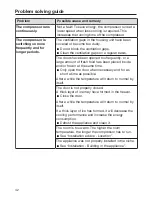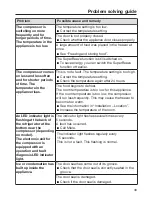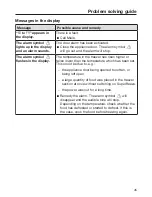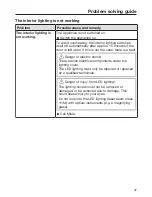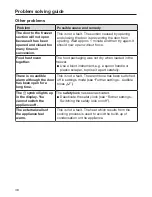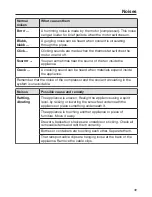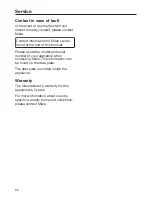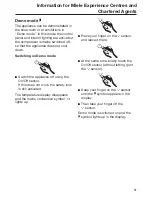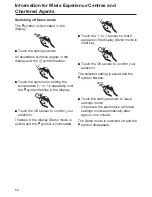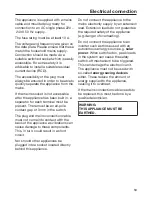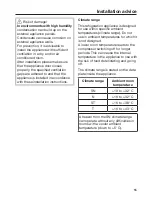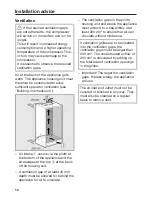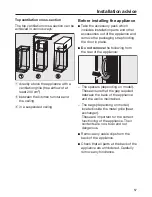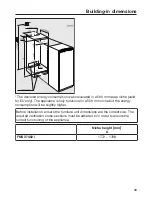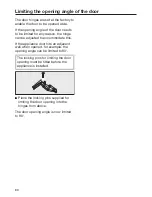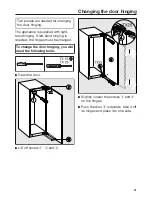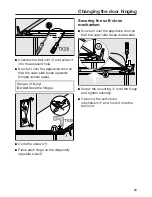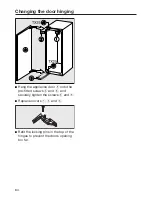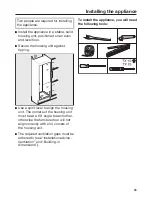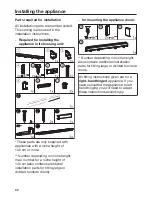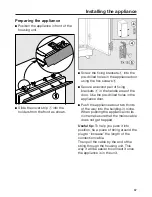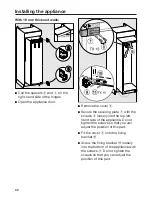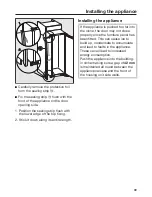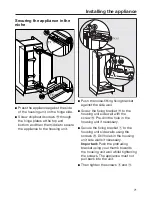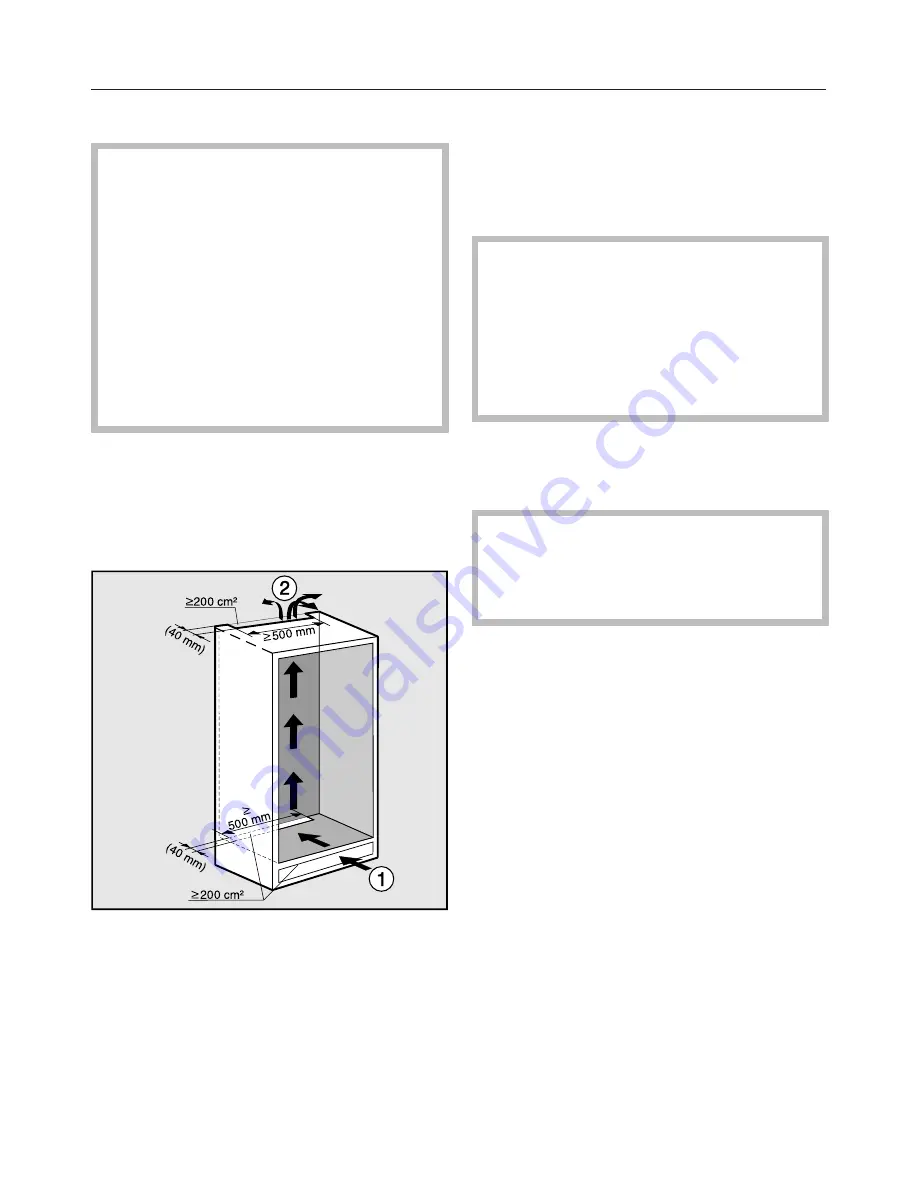
Installation advice
56
Ventilation
If the required ventilation gaps
are not adhered to, the compressor
will switch on more often and run for
longer.
This will result in increased energy
consumption and a higher operating
temperature of the compressor. This,
in turn, may cause damage to the
compressor.
It is essential to observe the required
ventilation gaps.
Air at the back of the appliance gets
warm. The appliance housing unit must
therefore be constructed to allow
sufficient space for ventilation (see
“Building-in dimensions”).
– Air intake
occurs via the plinth at
the bottom of the appliance and the
air escapes at the top
at the back
of the housing unit.
– A ventilation gap of at least 40 mm
depth must be allowed for behind the
appliance for air to circulate.
– The ventilation gaps in the plinth,
housing unit and above the appliance
must amount to a free airflow of at
least 200 cm² to ensure that air can
circulate without hindrance.
If ventilation grilles are to be inserted
into the ventilation gaps, the
ventilation gaps must be larger than
200 cm². The unobstructed airflow of
200 cm² is calculated by adding up
the total area of ventilation openings
in the grilles.
– Important! The larger the ventilation
gaps, the less energy the appliance
will use.
The air inlet and outlet must not be
covered or blocked in any way. They
must also be cleaned on a regular
basis to remove dust.

